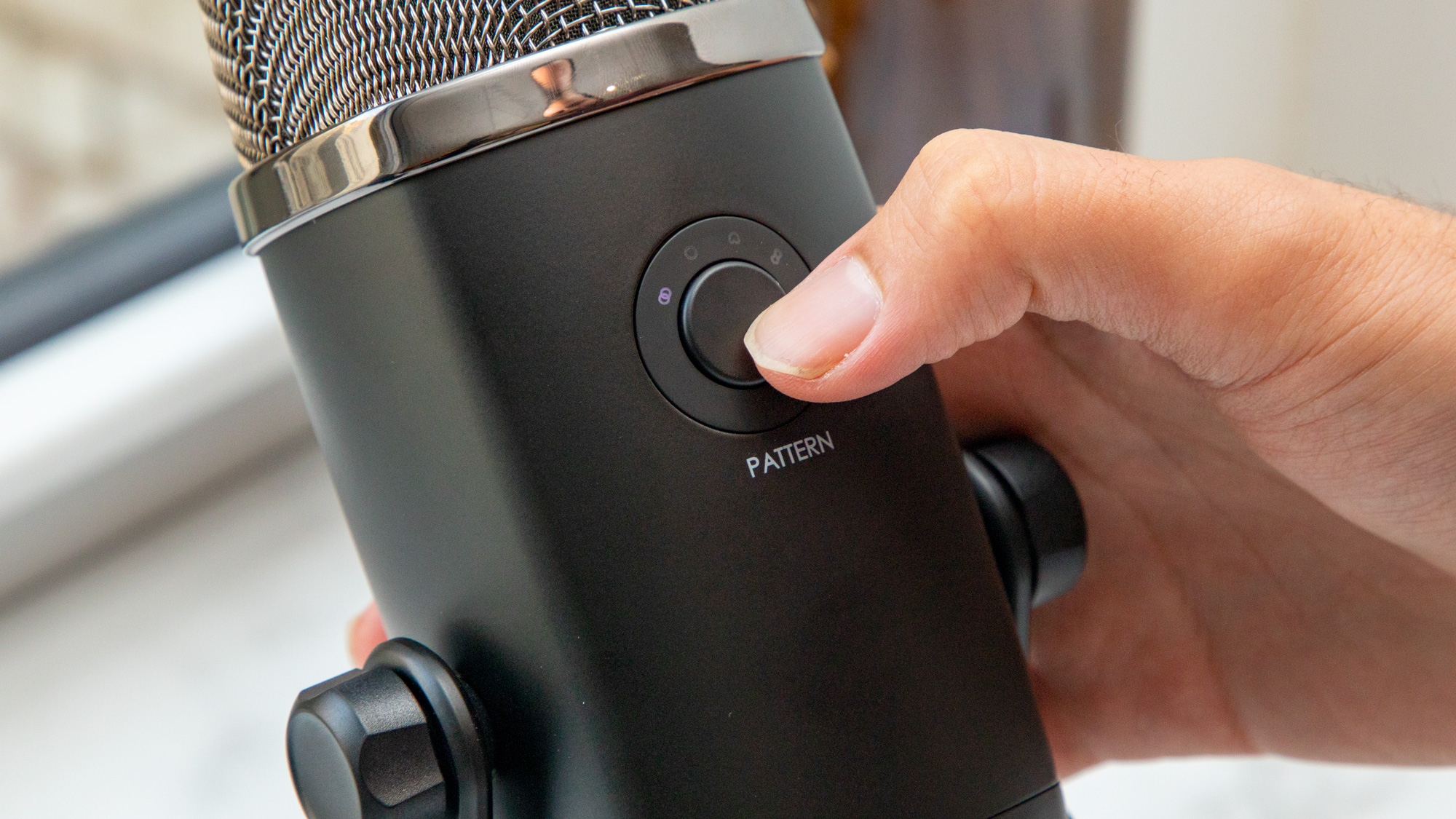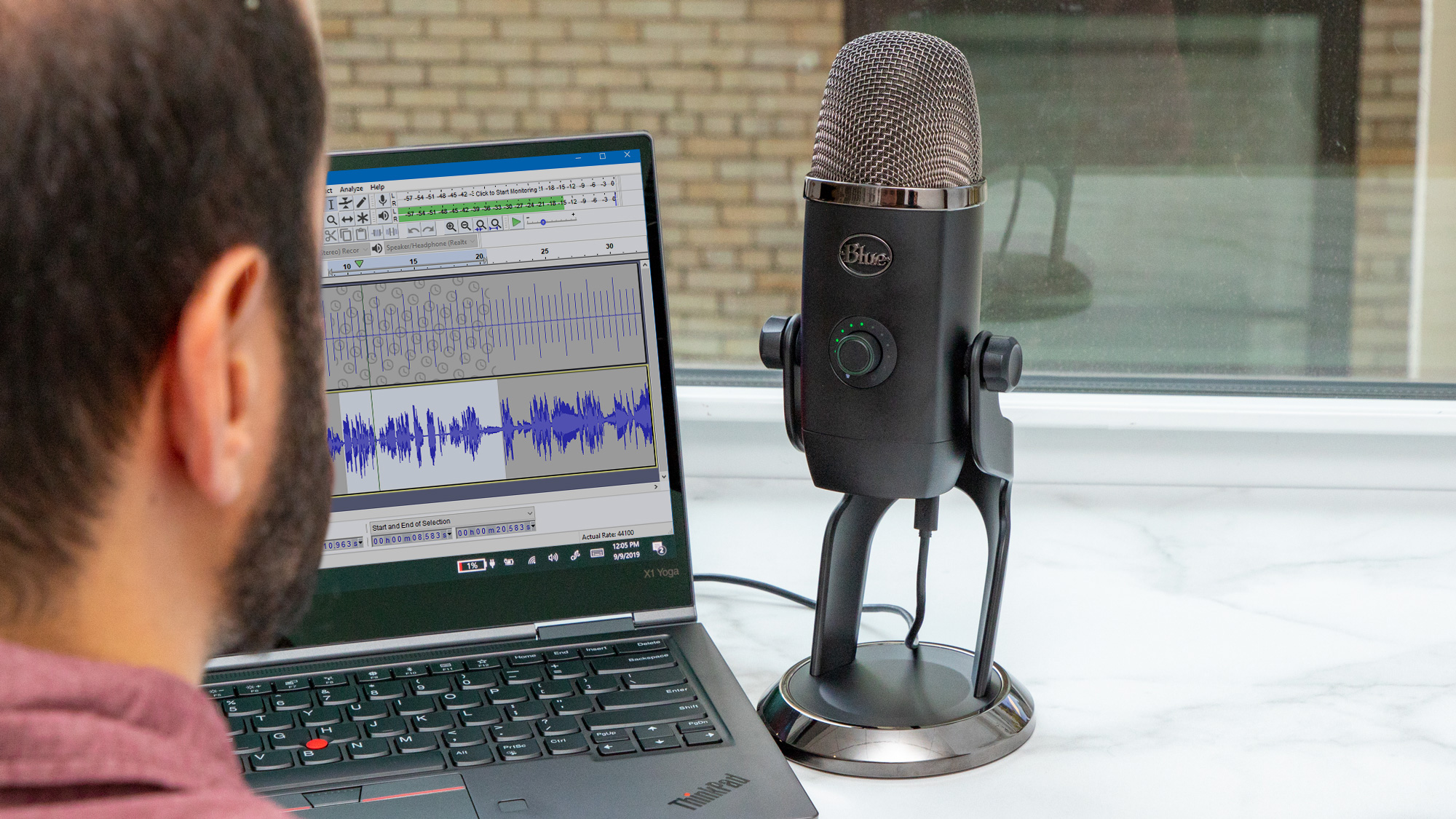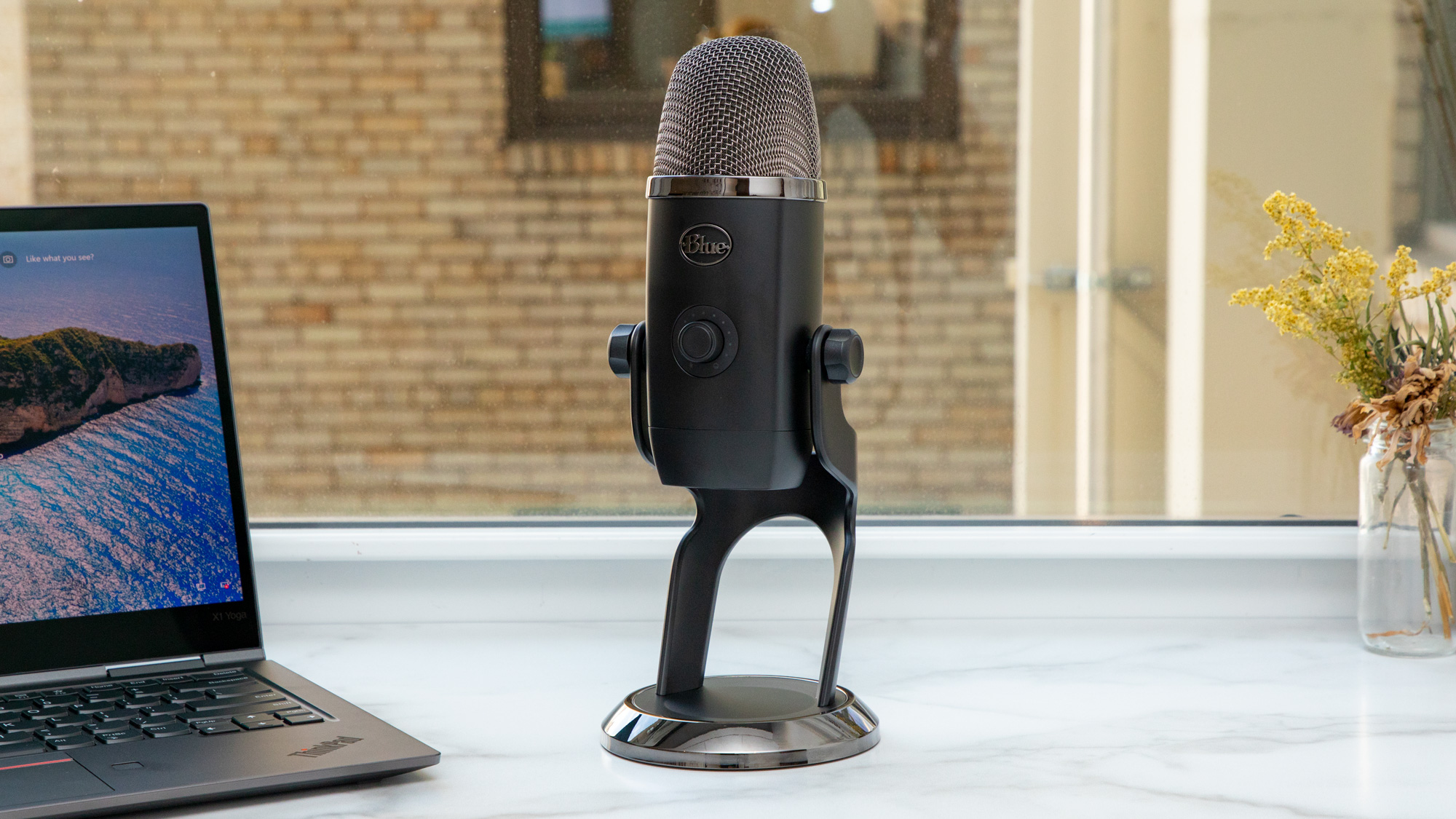Why you can trust Tom's Guide
How do you improve on one of the best microphones out there? Adding LED lights and a ton of customization options isn’t a bad way to start. The $169 Blue Yeti X does exactly that, combining Blue Voice software support, an onboard volume meter and tons of other neat features with the original Yeti's excellent sound quality. This premium microphone might not be worth the upgrade for every Yeti owner, but it does make an already-great mic even better.
- More of the best USB microphones
- Our picks of the best gaming headsets
Design and features
The Yeti X is a sleeker, more premium-looking version of its predecessor. The new peripheral has a slick two-tone look that consists of a slimmer black body and a layer of shiny silver that coats the microphone grille and base. But Blue’s new microphone really sets itself apart from its predecessor the moment you plug it in and see the device light up with a flurry of LED dots around its volume knob.

One of the Yeti X’s biggest upgrades is its customizable LED lights, which allow the microphone to provide an 11-dot volume meter that lets you know how loudly you’re speaking. A quick long-press of the volume knob allows you to use the knob to adjust your headphone volume, while another long-press lets you adjust monitoring levels so you can hear as much (or as little) of your own voice as you want.
The Yeti X has the same four recording modes as its predecessor. Stereo mode captures sounds on the left and right channels; cardioid mode captures sounds directly in front of the mic for solo podcasts and streams; omnidirectional mode captures sounds all around the mic for group sessions; and bi-directional records sound from the front and rear for two-person podcasts.

What’s changed is that that previous Yeti’s rear-facing recording mode knob has been replaced by a single button, which uses LED indicators to let you know which mode you’re currently using. The Yeti X also ditches the Yeti's rear-facing gain control knob, since you can now control gain from the front.
Logitech G Hub and Blue Voice
One of the Yeti X’s biggest selling points is that it’s fully customizable via Logitech’s G Hub software, from the microphone’s sound quality and voice modes, to its array of LED lights. You can use G Hub to fiddle with Blue’s VO!CE software, which allows you to enable a variety of vocal presets, or create your own by adjusting the low, medium and high frequencies.
I found that enabling Blue VO!CE’s basic Broadcaster preset made my voice sound noticeably louder and fuller. The Classic Radio Voice preset gave my voice a crisp, higher-pitched immediacy, while the AM Radio preset adds a neat, intentionally canned sound that made my voice sound like it was coming from an old car stereo.
Get instant access to breaking news, the hottest reviews, great deals and helpful tips.
There are also presets such as “Crisp and Modern,” “Warm and Vintage” and modes made for high and low voices, but I mostly found them to be slight variations on one another. I appreciate the amount of options and presets that Blue VO!CE provides, but I think that most streamers, YouTubers and podcasters will be fine with the basic Broadcaster preset. I really appreciate that the Blue VO!CE hub allows you to record a sample of your voice, which makes it easy to hear how you’ll sound on any given preset.

If you really want to get into the nitty gritty, there are a variety of advanced controls available in G Hub, including a high-pass filter for cutting out lower frequencies and a noise reduction toggle for blocking out common background sounds, such as fans and outdoor weather. Other advanced tools include a de-esser for removing hisses and pops, and a limiter to manage max volume.
G Hub also lets you tweak every single LED light on the Yeti X, from the ring around the mute button to the individual colors for normal, high and peak volumes in the real-time volume meter. Most of these options are nice little aesthetic bonuses, though the options to color-label every recording mode are handier, as they make it easier to see which mode is active at a glance.
Another nice touch provided by the G Hub software is a full equalizer for customizing whichever headphones you have connected to the Yeti X. You can tweak each sound band individually, or enable presets such as Bass Boost, Cinematic, First Person Shooter or Multiplayer Online Battle Arena.
Sound quality
The Yeti X uses a four-capsule condenser array, up from the three capsules on the original Yeti. However, in its default state, I find it to sound nearly identical to the standard Yeti — which is to say that it still sounds great.
The Yeti X still has a knack for picking up background noise, such as the loud clacks of my keyboard, as many sensitive condenser mics do. But when listening to my voice recordings and Twitch archives (here’s a sample), I found my voice to be crisp, loud and full, even over the loud anime beat-em-up sounds of River City Girls. Whether I was chatting over Discord or playing Gears 5, my friends consistently reported that they could hear me loud and clear.
Bottom line

If you’re in the market for a premium USB microphone for podcasting, streaming or content creation, the Yeti X should be at the top of your list. It sounds great out of the box, and there are a ton of advanced features for tweaking things via the Blue Voice software. The onboard LED lights are incredibly useful for monitoring your volume levels, and allow for some neat personalization options.
The $169 Yeti X is largely comparable to its $129 predecessor in terms of raw sound quality, so existing Yeti owners should consider upgrading only if they’re enticed by the added software and LED customization. But if you’ve yet to pick up a USB mic for your gaming or productivity setup, the Yeti X is one of the best you can buy.
Mike Andronico is Senior Writer at CNNUnderscored. He was formerly Managing Editor at Tom's Guide, where he wrote extensively on gaming, as well as running the show on the news front. When not at work, you can usually catch him playing Street Fighter, devouring Twitch streams and trying to convince people that Hawkeye is the best Avenger.


